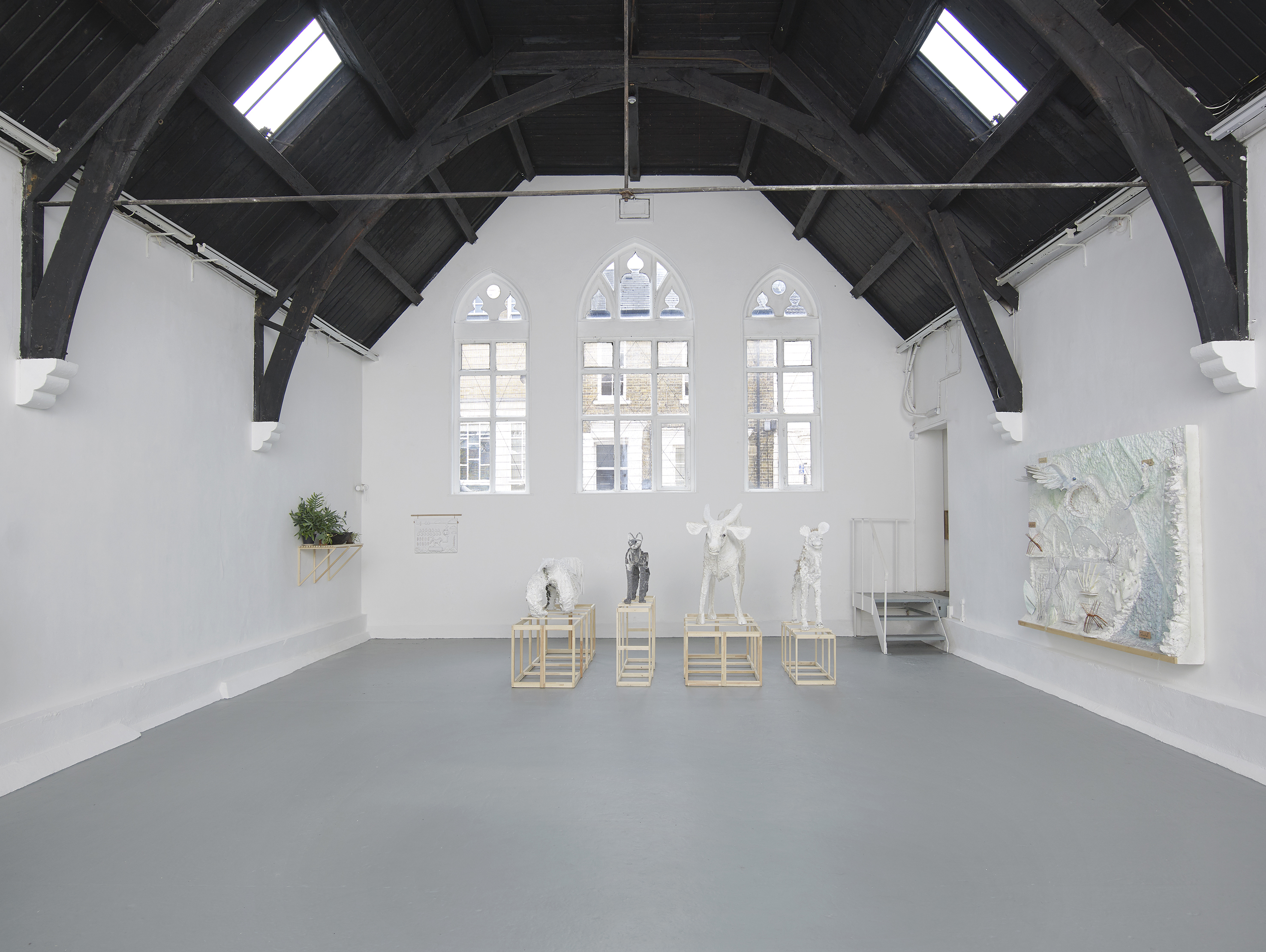Shows
Lin May Saeed’s “Biene”


A series of Styrofoam reliefs, sculptures and a paper screen sat under Studio Voltaire’s vaulted ceiling and handsome ecclesiastical frame for “Biene,” Lin May Saeed’s first solo institutional exhibition. Drawing on the liturgical tradition of using allegories and symbolic artifacts to impart lessons, the arrangement felt instantly profound and quietly pious.
Four stately animals—Ameisenbär/Anteater, Serval, Kalb/ Calf and Tüpfelhyäne/Spotted Hyena (all 2018)—with bodies carved roughly from blocks of white Styrofoam, presided over the show. Despite their naïve rendering in rudimentary material, the creatures have decidedly confrontational forms. All four stood facing the same direction on top of the frames of their empty crates; their paws half-lifted as if in contemplation of launching themselves into the center of the gallery to avenge their time in captivity. The bristles of fur on the hyena’s back stand on end and its snarl glistens, while the calf’s back is arched; the anticipation of their action created an unnerving atmosphere.

The artist’s long-standing animal rights activism provided a foundational narrative for the exhibition. Building on Saeed’s previous works, such as Mammoth Relief (2017), a Styrofoam tablet depicting acts of animal cruelty, headed with the text “Minding Animals Conference,” the show scrutinized the complex and imbalanced relationship between humans and animals, reflecting how we are irrefutably dependent on them for our physical, spiritual and emotional needs, yet willfully ignorant of their values. This was epitomized in the exhibition by Auf dem Floβ/On the Float (2007), a pseudo-mythological frieze centered around a free-floating elephant head that highlights the contradictions in hunting animals with spiritual significance for profit.
Saeed’s provocation for audiences to undertake the responsibility for change was embodied in other works. Hanging next to Antispe Kongress (2008)—a pile of posters illustrated by the artist advertising a 2008 convention on anti-specism—was a large paper cut. Bee (2018) is backlit and framed by an alcove, a configuration that borrows from the language of iconic figuration and the space’s history as a church. Yet, rather than an aspirational image to be adored, the simplistic figure with a toothy smile, whose hands are about to catch and kill a bee, is emblematic of those who discriminate against certain living beings based on their species. Further, the figure’s innocuous expression betrays the imbalance of powers between humans and animals, and our ambivalence in acknowledging this. As Saeed posits, denial is what defines the contemporary anthropocene.

Agri Relief (2017) continues the focus on the characteristics of our current geological age, depicting the precarious patterns of human nutritional subsistence. The white Styrofoam tile illustrates a food chain: droplets of rain, leaves and plump animals are connected with arrows, all pointing toward a human figure—the only beneficiary of the system. Meanwhile, a thermometer is etched in the lower right corner and the sea is odiously rising from below. As felt throughout “Biene,” Saeed wants the viewer to comprehend the gravity of our ecological situation. This is not an insidious issue but a reality, Saeed argues. The certitude of her ethics manifests in a provocative show. Saeed is expectant and anticipating us to act.
Lin May Saeed’s “Biene” is on view at Studio Voltaire, London, until August 26, 2018.







